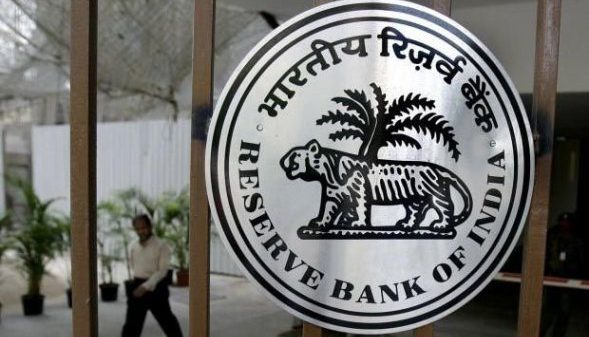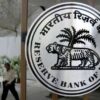It has become a game of cat-and-mouse game between law enforcement and predatory or fake lending apps in the country. Even as various police departments in the country are cracking down on these apps — which mushroomed during the pandemic — some of these apps are re-branding themselves and restarting operations. The Reserve Bank of India (RBI), which has been actively monitoring the issue, believes that these apps will continue to operate for at least a year, if not more.
Over the last year, a number of unauthorised digital lending apps popped up on Google’s Play Store and other Android app store. But these apps charge exorbitant fees and interest rates, and resort to extortion and blackmail tactics to collect payments from borrowers. As a result, a number of borrowers have committed suicide beginning in October last year.
According to a senior financial consultant, the RBI expects the problem to continue for at least one year as far as their supervisory efforts are concerned “They are scanning their complaints database, speaking to banks and other regulated entities on market information and they are continuously pushing different players to monitor customer issues,” this person said on the condition of anonymity.
In February 2021, the RBI constituted an internal working group to recommend regulations for digital lending platforms and mobile applications. The report has been submitted by the working group to the central bank for evaluation, multiple sources told MediaNama.
What you need to know
- Hundreds of new digital lending apps emerged post the first wave of COVID-19
- They used white-label software for collecting borrower data and duped payment companies into providing gateway services
- These apps offer short-term loans at exorbitant interest rates, loans for as low as ₹3,000 at interest rates of 50-100% per annum
- App operators harass borrowers whenever there is a delay in repayment
- Lending apps on the Google Play Store cannot offer such short-term loans for less than 60 days as per Google’s policies
- Regulated lenders are mandated to encrypt data or mask sensitive personal information for KYC purposes
- Fake digital lending apps use app permissions to gain unlawful access to sensitive customer information
- Google has taken down over 400-450 of these apps since December 2020
MediaNama reached out to several payment companies whose services were used by these unauthorised apps. Their responses are awaited.
In an email to MediaNama, Razorpay said that around 300 lending applications were banned from its network, after authorities reported the issue, and that there are no unauthorised lending applications on the Razorpay platform. “We continuously work towards monitoring all businesses who are onboarded on Razorpay. All the businesses onboarded on our platform have to submit a duly filled in KYC form along with an NBFC licence or FLDG agreement to ensure they are authorised entities,” the company said.
Local fronts for foreign operators
Many of these fraudulent digital lending apps give loans for periods as short as 7-days to as long as 12 months at interest rates in excess of 20-30%. In case the borrower defaults, employees of these apps harass the borrower by bombarding them with text messages or turn to social media to taunt the borrower amongst their friends and family. The predatory loan app operators also charge large amounts of fees, which is directly debited from the loan amount before being disbursed. This creates a vicious cycle, where borrowers have to keep applying for fresh loans to pay off their existing debt.
Loan apps can come in various shapes and form:
- Authorised mobile app, with a partnership with regulated bank or non-bank lender. These are the legitimate players.
- Authorised mobile app, with a partnership with a non-bank lender that is skirting rules. Although licensed, these players structure their products in violation of RBI guidelines
- Mobile app without any regulated entity partnerships, operated by networks of local money lenders
- Mobile app without any regulated entity partnerships, operated by Chinese actors through a host of shell companies and benami directors
While the Enforcement Directorate is working with various state police forces, in addition to inter-state investigations, the Hyderabad Police has been at the forefront of investigating these apps and their operators; it is important to note that the city of Hyderabad has three police commissionerates — Hyderabad City, Cyberabad and Rachakonda. Recently, the Hyderabad Police arrested the director of a financial services firm and froze Rs 400 crore in accounts associated to the fraudulent money-lending operation. Since December 2020, over 50 cases have been registered by local police.
A senior police official told MediaNama that under their jurisdiction they have registered 28 cases and arrested 22 people, including Chinese nationals, in the last few months. “The total value of transactions by these fraudulent apps, under these cases, would be around Rs 20,000 crore. The three commissionerates are working together to investigate complaints against these apps,” the official said on the condition of anonymity.
“We have been able to arrest the directors of companies, based on Registrar of Company data, and employees at call-centres involved in these operations. The larger picture is that these apps were operated from outside the country and these companies and directors were fronts, with employees getting a share out of these transactions,” the official said.
The official admitted that it was entirely possible that some of these app operators have created a fresh apps and have restarted their operations. However, the number of complaints against such apps have been reducing, perhaps due to greater public awareness, they added.
Old apps, same actors, new names
While the number of suicides seems to have died down ever since police authorities began cracking down on these app operators over the last few months, the problem is far from over.
Srikanth L, co-convenor of Cashless Consumer, told MediaNama that many of these apps are reinventing themselves, they have re-branded and are back on Play Store. Cashless Consumer and BanBreach compiled a database, which analysed 1,000 lending apps marketed on Google’s Play Store. These apps were developed by regulated and unregulated entities.
“Some apps were entirely run by a Chinese actor who hired people at call centres and a few benami directors. All they needed to do was rebrand the app. After Google issued a new policy, some of these apps updated their websites and added disclosures and certificates on their NBFC partnership. But these guys are the same actors, they are providing the same product and are following the same lending and collection practices,” Srikanth said.
He added that some of these apps are switching NBFC partners, as per their convenience, to dupe customers into believing they have strong lending partners.”We found that some of these re-branded apps listed fake addresses and used random images from the web to show that they have a legitimate office. Also, the tools we used to analyse the 1,000 apps a few months ago do not work anymore, since these apps are obfuscating their code. They are learning from the crackdown and are adapting,” he said.
Back in October 2020, there may have been 2,000 lending apps available for download, now there are less than 200 apps on the Play Store, said Akshay Mehrotra, Founding Member of Fintech Association for Consumer Empowerment (FACE) and CEO & Co-Founder, EarlySalary.
“Fintech lending industry in India is just 5 years old and around 90% of the market is run by regulated players. COVID-19 created a large opportunity for loans of small value and high interest rates. While the Chinese regulator put out an interest rate cap and banned many of the lending models over the last few years, some of these same players moved to greener pastures across South East Asia and India,” Mehrotra said.
Prime opportunity for predatory lenders
The RBI has strict guidelines on interest rates and practices to be followed by collection agents when attempting to recover or collect loan repayment. But these apps use predatory tactics to recover the loan earn high margins. In many cases, even after the borrower repaid the loan amount and interest, the app operators continued their harassment to extort more money.
One reason why these apps became popular is perhaps due to a product mismatch in the credit market. Since the RBI mandates lenders to follow strict Know-Your-Customer (KYC) norms, underwriting standards, credit score checks and other rules, some borrowers may have found themselves excluded from the regulated lending market. When the pandemic hit, many of those who lost their jobs and source of income may have had no choice but to turn to these unregulated lending apps for short-term credit to tide over expenses.
“The overall demand for these type of loans [short-term small-ticket] is not going anywhere and it is here to stay,” Wilfred Sigler, Senior Director of Market Development and Digital Solutions, CRIF India told MediaNama. “Many years ago there were big banks and lenders who were providing small ticket loans to the sub-prime market. The product offering tapered off subsequently due to multiple reasons and such players exited,” he said.
In an email to MediaNama, CRIF said that some NBFCs, neo-age lenders and fintechs are increasingly targeting young, low income, digitally savvy customers who have small ticket and short-term credit needs and no or limited credit history. These customers are generally ignored by incumbent lenders because of their high perceived risk, it added.
It is important to note that credit bureaus only monitor credit scores when lenders send them repayment information. If lenders are hiding loans or if borrowers are availing loans from an unregulated entity, the repayment behavior cannot be monitored by a credit bureau. The overall default rate among fintech lenders remains low at 0.61%, whereas in the below Rs 50,000-segment the default rate stood at 9.4% as of August 2020, the credit bureau said.
The predatory apps not only targeted high-risk segments, with toxic loan products, but also subverted conventional risk management practices. These apps were able to offer loans that regulated entities simply aren’t allowed to. For instance, per regulations, small loans worth Rs 5,000 need to have a minimum repayment window of 3 days. These apps were able to fulfill this gap through quick ‘pay per day’ loans, without any credit underwriting .
“RBI policies differ from Google Play policies. As far as Google Play is concerned, they have restricted lending apps giving loans for shorter than 60 days,” said Yogi Sadana, CEO of CASHe and founding member of FACE. “Under a 60+day repayment period, the borrower has 2 EMIs so it depends on how companies want to structure their repayment of the loan. Offering micro personal loans loans between Rs 2,000 to 3,000 loan is not economical as it is hard to collect, and thereby increases the risk significantly on the product,” he said.
Sigler believes in time the market will solve this gap. “The digital platforms are trying to bridge this gap with an extension of need fulfilment like small ticket and short tenure loans. While ‘buy-now-pay-later can solve some of these issues and address the demand for consumption loans, I think over time traditional lenders will also address this market with smaller ticket size loans,” he said.
Regulatory response to predatory loan apps
In June last year, the RBI directed banks and non-bank lenders who use third-party fintech apps and websites to provide better transparency and disclosures on their websites/apps and in the loan documentation. However, many consumers are not aware of such disclosures. Following a spate of suicides and complaints of harassment by operators of these fake loan apps, in December the regulator warned borrowers and customers from availing loans from digital lending websites and mobile apps that are unregulated. Two months later, it set up the working group on digital loan apps and websites.
Since these apps operate in the dark, they are able to circumvent these rules and offer more flexible loan terms to the borrower. The borrower, on their part, sees such attractive terms and applies for the loan by providing all their information without any questions. It is only when the loan term ends and the harrassment from loan collectors begins, do borrowers realise that they are dealing with unscrupulous actors.
Many small NBFCs are not monitored by the RBI in the same way as the bigger players, so they are able to fly under the radar, a senior fintech executive told MediaNama.”We have to look at the practices of small NBFCs, particularly those with balance sheets of less than Rs 500 crore.
The RBI today is dependent on public complaints and market intelligence to identify and pull-down such apps, but this may not be the best solution to the present fight. “In the early times the Micro-Finance industry went through its own turmoil and as it evolved a Self-Regulatory Organisation, helping improve industry practices. And now MFIs are an important piece of the lending market helping millions of grass root borrowers in India,” said Mehrotra of EarlySalary.
“The RBI has been very proactive reaching out to FinTech industry to help improve practices. They understand the industry is at a nascent stage, and will like the industry to participate in countering current issues and want to bless a better lending ecosystem for FinTech to flourish,” he added.
One solution is real-time monitoring by the RBI, banks, lenders and fintech players. “But it will be difficult to create a quasi-regualtory mechanism, with Google and other industry participants, because of how these foreign companies are structured. However, with the current RBI more aligned to the Finance Ministry, I expect that there will be a more coordinated effort from all regulators and government agencies going forward,” the senior fintech executive said.
Also Read
- Troves of data stolen by fake digital lending apps
- RBI seeks industry inputs on regulating digital lending apps: Report
- Lending fintechs warrant novel regulation methods to address risks, says RBI governor Shaktikanta Das















